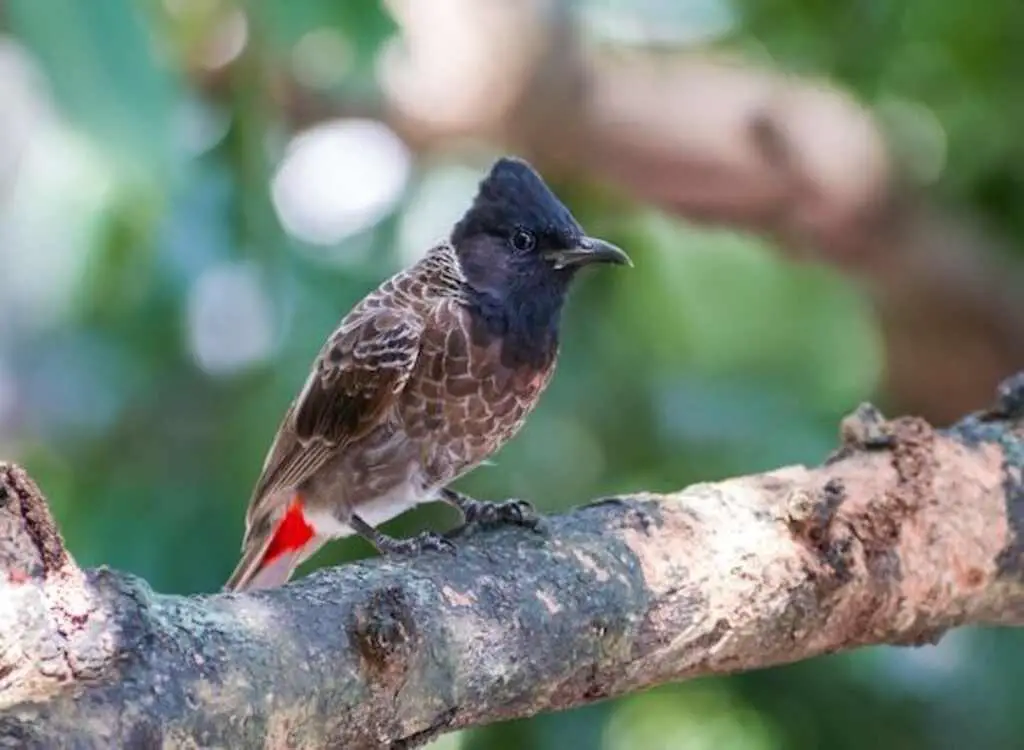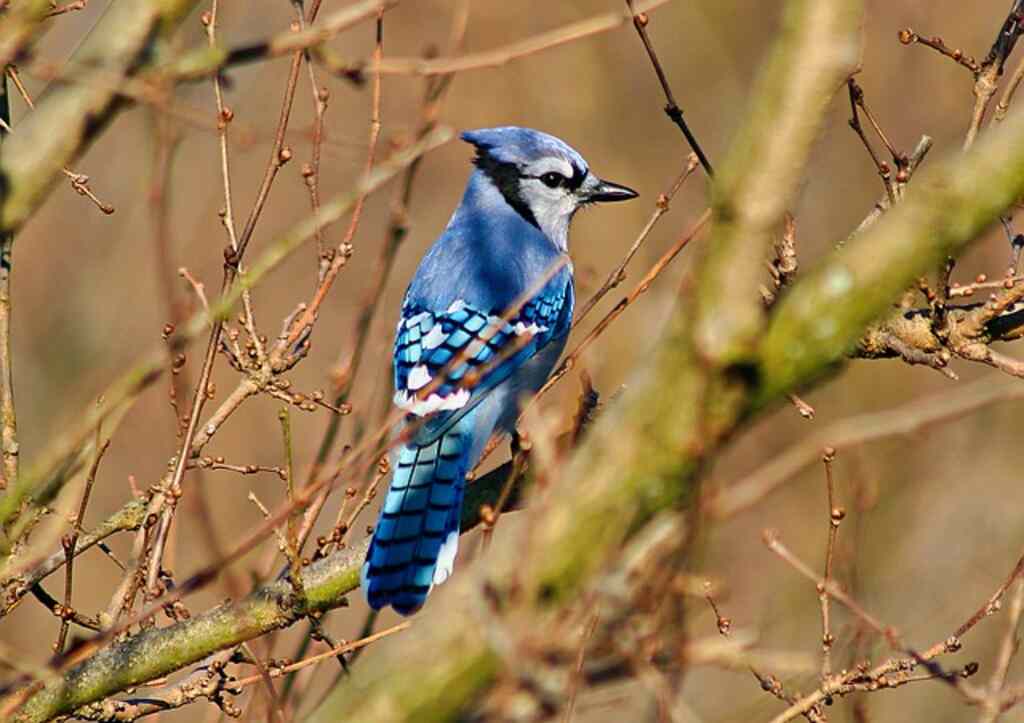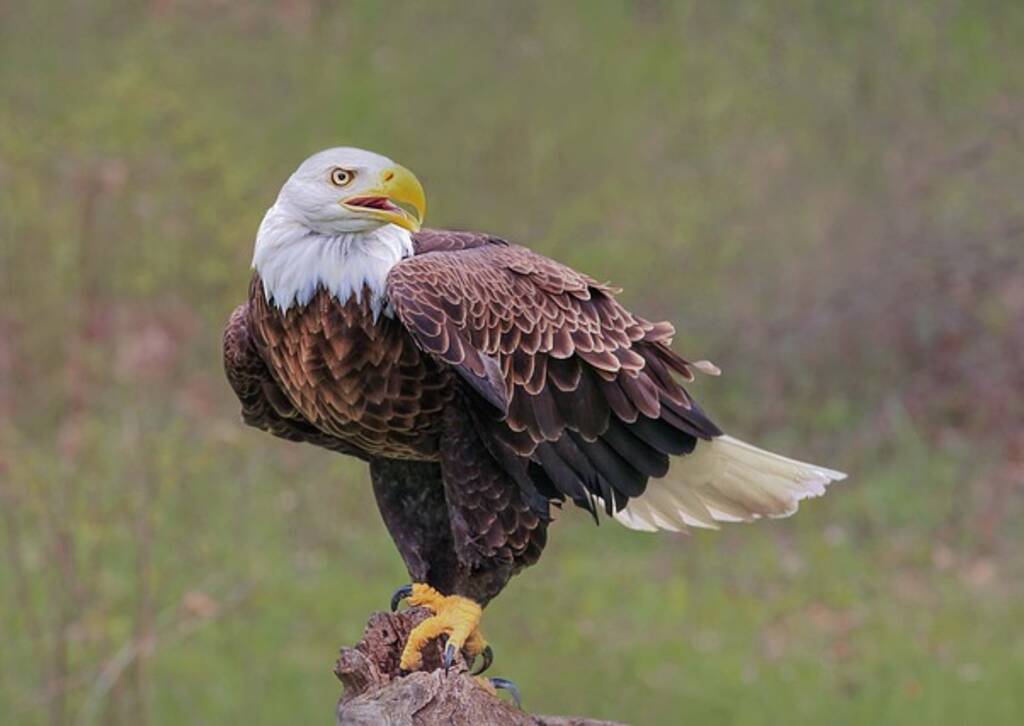Minnesota is a haven for birdwatchers, offering a diverse range of habitats and bird species. From bald eagles to warblers, Minnesota provides ample opportunities for bird enthusiasts to indulge in their passion.
In this article, we will explore the top birdwatching hotspots in Minnesota, along with tips and techniques for observing birds and preserving their habitats.
Table of Contents
- 1 Key Takeaways:
- 2 Birdwatching Hotspots In Minnesota
- 3 Birdwatching Trails in Minnesota
- 4 Minnesota Birdwatching Guide: Tips and Techniques
- 5 Top Birdwatching Hotspots: Northern Minnesota
- 6 Top Birdwatching Hotspots: Southern Minnesota
- 7 Unique Bird Species in Minnesota
- 8 Birdwatching Tours in Minnesota
- 9 Birdwatching Etiquette and Conservation in Minnesota
- 10 Best Time for Birdwatching in Minnesota
- 11 Conclusion
- 12 FAQs: Best Birdwatching Hotspots In Minnesota
- 12.1 What are the top birdwatching hotspots in Minnesota?
- 12.2 Can you recommend any birdwatching trails in Minnesota?
- 12.3 What tips and techniques can you provide for birdwatching in Minnesota?
- 12.4 What are some unique bird species that can be found in Minnesota?
- 12.5 Are there any guided birdwatching tours available in Minnesota?
- 12.6 What should I know about birdwatching etiquette and conservation in Minnesota?
- 12.7 When is the best time for birdwatching in Minnesota?
- 13 Author
Key Takeaways:
- Minnesota is a top destination for birdwatchers due to its diverse bird species and habitats.
- Discover the best birdwatching trails and hotspots in Northern and Southern Minnesota.
- Learn tips and techniques for birdwatching in Minnesota, including the best time of year to visit and recommended equipment.
- Discover unique bird species found in Minnesota, and conservation initiatives aimed at protecting them.
- Explore guided birdwatching tours available in Minnesota, and ethical guidelines to follow while observing birds.
Birdwatching Hotspots In Minnesota
Minnesota is a popular destination for birdwatching. Some of the best hotspots include Sax-Zim Bog, Lake Superior, and the Minnesota Valley National Wildlife Refuge. Other great places to birdwatch in Minnesota include the North Shore, the Boundary Waters Canoe Area Wilderness, and the Mississippi River Valley.
Birdwatching Trails in Minnesota
If you’re an avid birdwatcher, you’ll find plenty of trails in Minnesota that offer great opportunities to spot a wide variety of birds. From the woodlands in the north to the prairies in the south, Minnesota’s diverse landscape is home to over 440 bird species.
Here are some of the most popular birdwatching trails in Minnesota:
| Trail | Location | Bird Species | Facilities/Amenities |
|---|---|---|---|
| Audubon Center of the North Woods | Sandstone | Bald Eagle, Great Blue Heron, Pine Grosbeak, and more | Visitor Center, Gift Shop, Outdoor Classroom, Restrooms |
| Superior Hiking Trail | North Shore | Ruffed Grouse, Northern Hawk Owl, Boreal Chickadee, and more | Campgrounds, Picnic Areas, Restrooms |
| Minnesota River Valley National Wildlife Refuge | Bloomington | Bald Eagle, American White Pelican, Common Loon, and more | Hiking Trails, Observation Decks, Restrooms |
These trails are carefully maintained and managed by the state authorities and offer a wide range of facilities and amenities for birdwatchers. Make sure to wear appropriate clothing and footwear, carry binoculars and bird guides, and respect the wildlife and their habitats.
Birdwatching Trails in Minnesota: Tips and Techniques
When birdwatching on the trails in Minnesota, there are a few tips and techniques that can greatly improve your experience:
- Find a quiet and secluded spot to observe the birds.
- Stay still and use binoculars to avoid disturbing the birds.
- Look for movement in the bushes and trees.
- Listen for bird calls and songs.
- Watch for patterns in the bird’s behavior.
- Take notes and photographs for later identification.
By following these simple tips, you’ll be able to spot a wide variety of bird species and enjoy the natural beauty of Minnesota’s landscape.
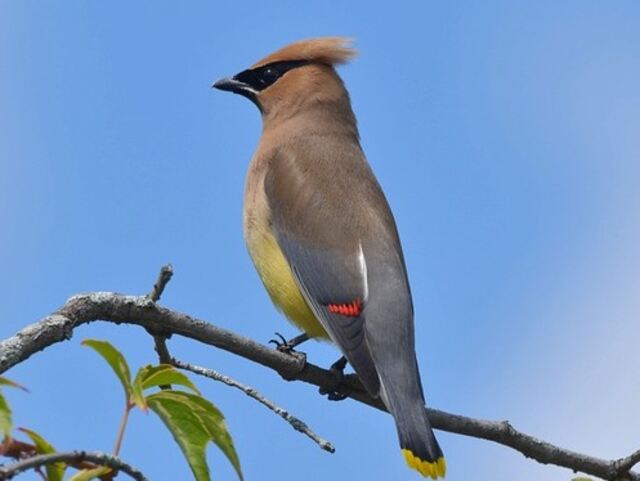
Minnesota Birdwatching Guide: Tips and Techniques
Birdwatching can be a fulfilling and awe-inspiring experience for nature enthusiasts. Minnesota, with its diverse natural landscape, is a prime location to observe a wide variety of bird species throughout the year. Here are some tips and techniques to make the most out of your birdwatching adventures in Minnesota.
Best Time to Birdwatch in Minnesota
The best time to birdwatch in Minnesota depends on what species you want to observe. Spring and fall are prime migration times for many birds, while summer offers a chance to witness breeding behaviors.
Winter birdwatching is also a unique experience, with snowy landscapes and the chance to spot wintering species such as Snowy Owls.
It is important to consider weather conditions, as bird activity may vary according to temperature, precipitation, and wind.
Recommended Equipment for Birdwatching in Minnesota
Appropriate equipment can enhance your birdwatching experience. Binoculars are essential for observing birds in the wild. A spotting scope can also be useful for long-distance viewing. Field guides or birding apps can help you to identify different species.
Wearing comfortable and durable clothing is important, particularly in Minnesota’s varied weather conditions. Bringing snacks, water, and sunscreen is also recommended.
Bird Identification in Minnesota
Minnesota is home to over 400 bird species. To identify different bird species accurately, it is essential to pay attention to key features such as size, shape, color, and behavior.
Field guides or birding apps can help to identify and learn more about each species. Learning to recognize bird vocalizations is also important, as many birds communicate through distinctive songs and calls.
Respecting Bird Habitats and Behaviors
While observing birds, it is crucial to respect their habitats and behaviors. Avoid disrupting nesting or breeding behaviors, as this can cause stress and harm to birds. Keep a safe distance from birds and avoid approaching too closely, which can cause them to feel threatened and disturbed.
Certain areas, such as state parks or wildlife refuges, may have specific guidelines for birdwatchers to follow to protect the environment and bird populations.
Top Birdwatching Hotspots: Northern Minnesota
When it comes to birdwatching in Minnesota, there are few places more exciting than Northern Minnesota. This region is home to some of the state’s most diverse and unique bird species, making it a must-visit destination for bird enthusiasts.
The Boundary Waters Canoe Area Wilderness is one of the top birdwatching spots in Northern Minnesota. This vast wilderness area is home to over 220 bird species, including the Common Loon, Bald Eagle, and Osprey.
The area’s lakes and rivers provide ample opportunities for waterfowl observation, while the dense forests offer a chance to see woodpeckers and warblers.
Another top birdwatching destination in Northern Minnesota is the Sax-Zim Bog. This 30,000-acre wetland area is a popular spot for Minnesota birdwatchers thanks to its incredible variety of bird species.
Visitors can expect to see Northern Hawk Owls, Black-backed Woodpeckers, and many other bird species.
| Location | Bird Species |
|---|---|
| Boundary Waters Canoe Area Wilderness | Common Loon, Bald Eagle, Osprey, Woodpeckers, Warblers, and Waterfowl |
| Sax-Zim Bog | Northern Hawk Owls, Black-backed Woodpeckers, and Various Bird Species |
Birdwatchers visiting Northern Minnesota should keep an eye out for rare species such as the Great Gray Owl and the Spruce Grouse, which are both found in the region. Additionally, the area around Duluth is known for its spectacular bird migrations, providing opportunities to see large flocks of birds as they fly south for the winter.
Overall, Northern Minnesota is a paradise for birdwatchers and nature lovers alike. With its unique bird species, vast wilderness areas, and exciting migrations, it’s no wonder this region is considered one of the top birdwatching hotspots in Minnesota.
Top Birdwatching Hotspots: Southern Minnesota
Southern Minnesota is a birdwatcher’s paradise, with a wide variety of habitats and bird species to observe. Here are some of the top birdwatching hotspots in Southern Minnesota:
| Location | Featured Bird Species |
|---|---|
| Whitewater State Park | Bald Eagle, Barred Owl, Pileated Woodpecker, Eastern Bluebird |
| Minnesota Valley National Wildlife Refuge | Trumpeter Swan, Sandhill Crane, Great Blue Heron, Belted Kingfisher |
Whitewater State Park is located in southeastern Minnesota and is home to over 250 species of birds. Visitors can hike the trails through the forest and along the Whitewater River to spot Bald Eagles soaring overhead and Pileated Woodpeckers hammering away at trees.
The park is also known for its resident Barred Owls and Eastern Bluebirds.
Minnesota Valley National Wildlife Refuge covers over 14,000 acres and stretches along the Minnesota River. The refuge offers a diverse range of habitats, including wetlands, forests, and grasslands.
Visitors can expect to see large flocks of Sandhill Cranes and Trumpeter Swans, as well as Great Blue Herons and Belted Kingfishers.
If you’re looking for a guided birdwatching experience in Southern Minnesota, consider booking a tour with Wargo Nature Center or the Minnesota Ornithologists’ Union. Both organizations offer guided tours led by expert birders and naturalists.
Unique Bird Species in Minnesota
Minnesota is a haven for birdwatchers, offering unique opportunities to observe a wide variety of bird species. While many of these birds are common to the region, others are rare and elusive, making them a prized sighting for bird enthusiasts.
The Great Gray Owl is one such species. This magnificent bird is the largest owl in North America and is known for its distinctive facial disc and piercing yellow eyes.
While they are found in other parts of the country, they are most commonly seen in Minnesota’s dense coniferous forests, especially during the winter months.
Another rare bird found in Minnesota is the Piping Plover. These small shorebirds have experienced significant population decline due to habitat loss, making sightings in Minnesota particularly special.
They can be found along the shores of Lake Superior during their breeding season, and at other times of the year, they can be spotted in other areas along the Great Lakes.
Minnesota is also home to the endangered Kirtland’s Warbler. This small songbird is known for its beautiful yellow breast and striped back.
It is found in certain types of Jack Pine forests in Northern Minnesota during the breeding season, making Minnesota an important location for conservation efforts aimed at preserving this species.
Other unique bird species commonly found in Minnesota include the Snowy Owl, the Ruffed Grouse, and the Greater Prairie Chicken.
Each species has its own distinctive features and habitats, making birdwatching in Minnesota an exciting and rewarding experience for all.
Birdwatching Tours in Minnesota
If you’re looking for an experienced guide to help you explore the best birdwatching hotspots in Minnesota, consider taking a birdwatching tour. These tours are led by expert guides who know the area well and can help you identify bird species and locate the best viewing spots.
One popular tour company is Minnesota’s Birding Ecotours. They offer a variety of tours, including day trips and multi-day tours, throughout the state. Their tours are led by certified birding guides and are designed for birders of all skill levels.
Another option is the Audubon Center of the North Woods. They offer both birdwatching tours and bird banding demonstrations, allowing bird enthusiasts to observe and learn about birds up close.
If you prefer a more customized experience, consider booking a private tour with a local birding guide. One such guide is Erik Bruhnke, who offers private birding tours throughout Minnesota.
Whether you choose a group tour or a private tour, a guided birdwatching experience is a great way to learn more about the bird species of Minnesota and to get the most out of your birding trip.
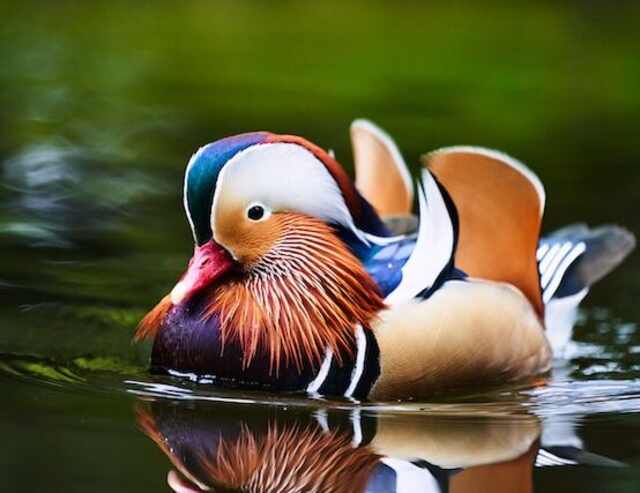
Birdwatching Etiquette and Conservation in Minnesota
Birdwatching is an enjoyable and rewarding activity, but it’s important to remember that birds are wild animals and should be treated with respect. Here are some tips for practicing birdwatching etiquette and conservation in Minnesota:
Respect Bird Habitats
When birdwatching in Minnesota, it’s essential to be mindful of the habitats in which birds live. Avoid disturbing nests or other habitats where birds may be breeding or caring for their young.
The Minnesota Department of Natural Resources (DNR) recommends staying at least 200 feet away from bald eagle nests, for example, and not approaching other nests or roosting sites too closely.
If you’re not sure whether an area is a bird habitat, check with local conservation organizations or the DNR.
Minimize Your Impact
Another important aspect of birdwatching etiquette is minimizing your impact on bird habitats. This means staying on established trails or paths when possible and avoiding trampling on vegetation or disturbing the soil.
If you’re observing birds in an area where they are feeding, be mindful of the impact your presence may have on their feeding patterns and give them plenty of space.
Use Binoculars and Telephoto Lenses
Using binoculars or a telephoto lens is a great way to observe birds without getting too close to them. This is especially important when birds are nesting or roosting, as getting too close can cause them undue stress.
It’s also essential to turn off the autofocus feature on your camera to avoid accidentally focusing on the bird’s eye, which can damage their vision.
Observe Ethical Guidelines
Finally, it’s important to observe ethical guidelines when birdwatching in Minnesota. This means not using bait or other lures to attract birds, not harassing or disturbing them, and avoiding behavior that could be seen as threatening or aggressive.
It’s also important to respect the rights of other birdwatchers by not crowding or interfering with their observations.
By following these tips and guidelines, you can help ensure that birdwatching in Minnesota remains a safe, enjoyable, and rewarding experience for everyone involved.
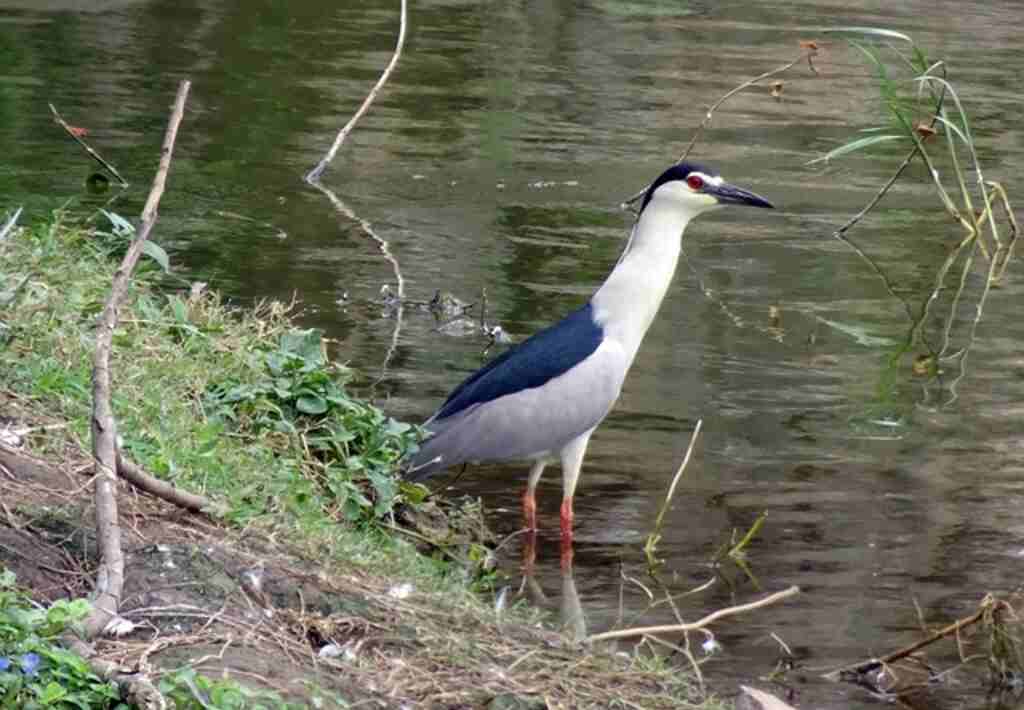
Best Time for Birdwatching in Minnesota
Birdwatching in Minnesota can be enjoyed throughout the year, but certain seasons offer better opportunities for spotting specific bird species. The best time to go birdwatching in Minnesota depends on the type of birds you want to observe and their migration patterns.
Spring (March to May)
Spring is an excellent time for birdwatching in Minnesota, especially for waterbirds, songbirds, and raptors. Many bird species migrate north during this season, and the trees and forests come alive with bird songs and colorful plumage.
In April and May, the Great Lakes and coastal areas of Minnesota attract thousands of waterbirds, including ducks, geese, and swans, as they migrate to their breeding grounds.
Some of the bird species to look out for in spring include the American Goldfinch, Baltimore Oriole, Northern Cardinal, and the Red-tailed Hawk.
Summer (June to August)
Summer is a great season for birdwatching in Minnesota, as the warmer weather brings out a wide variety of bird species. The state’s wetlands and marshes attract numerous waterbirds, such as the Great Blue Heron and the American White Pelican, while the forests and prairies are home to several songbirds, such as the Eastern Bluebird, the Indigo Bunting, and the Western Meadowlark.
Additionally, summer is the breeding season for many bird species, making it an ideal time to observe nesting behaviors and watch chicks grow.
Fall (September to November)
Fall is another optimal season for birdwatching in Minnesota, with the state’s forests and prairies serving as stopover points for many bird species during their southward migration. Some of the bird species to look out for in fall include the Ruby-crowned Kinglet, the Cedar Waxwing, and the White-throated Sparrow.
Additionally, Minnesota’s lakes and coastal areas attract numerous waterbirds as they prepare for their long migration south.
Winter (December to February)
Despite the cold weather, winter can be a rewarding season for birdwatching in Minnesota. The state’s coniferous forests and wetlands attract several bird species that are only present in winter, such as the Snowy Owl, the Northern Hawk Owl, and the Bald Eagle.
Additionally, winter is an excellent time for observing winter finches, such as the Common Redpoll and the Pine Siskin, as they come to Minnesota in search of food.
Overall, the best time to go birdwatching in Minnesota depends on the specific bird species you want to observe and their migration patterns.
However, with its diverse habitats and stunning avian species, Minnesota is a great destination for birdwatching enthusiasts all year round.
Conclusion
In conclusion, birdwatching in Minnesota offers a unique experience for nature enthusiasts and bird lovers alike. With its diverse range of habitats and bird species, the state has something for everyone to explore and appreciate.
We have highlighted some of the top birdwatching hotspots in Minnesota, including popular trails, guided tours, and unique bird species.
Additionally, we have provided a comprehensive guide for birdwatching in the state, including tips and techniques, etiquette and conservation practices, and the best time for birdwatching.
We encourage readers to explore these birdwatching hotspots and to enjoy the beauty of Minnesota’s avian species. Remember to be respectful of birds and their habitats, and to adhere to ethical guidelines while observing them.
With these considerations in mind, birdwatching in Minnesota can be a rewarding and fulfilling experience for all.
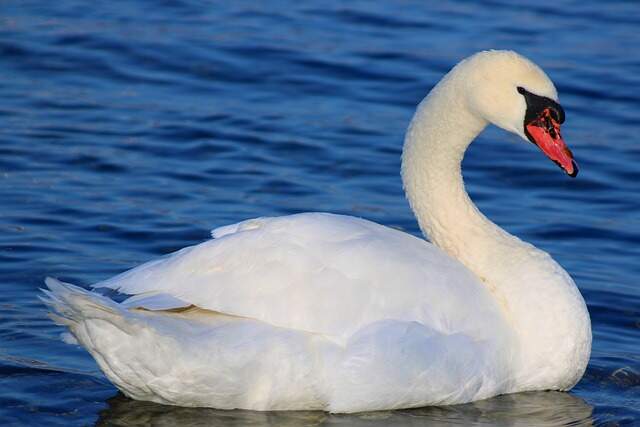
FAQs: Best Birdwatching Hotspots In Minnesota
What are the top birdwatching hotspots in Minnesota?
The top birdwatching hotspots in Minnesota include Northern Minnesota and Southern Minnesota, which offer diverse habitats and a wide range of bird species to observe.
Can you recommend any birdwatching trails in Minnesota?
Some popular birdwatching trails in Minnesota include the Boundary Waters Canoe Area Wilderness and Sax-Zim Bog in Northern Minnesota, as well as Whitewater State Park and Minnesota Valley National Wildlife Refuge in Southern Minnesota.
What tips and techniques can you provide for birdwatching in Minnesota?
When birdwatching in Minnesota, it is helpful to visit during the best time of year, have the recommended equipment such as binoculars and a field guide, and learn how to identify different bird species. Additionally, it is important to respect the habitats and behavior of birds during the observation process.
What are some unique bird species that can be found in Minnesota?
Minnesota is home to unique bird species such as the Great Gray Owl and the Piping Plover. These birds have specific habitats within the state, and conservation efforts are in place to protect them.
Are there any guided birdwatching tours available in Minnesota?
Yes, there are birdwatching tours available in Minnesota. These tours are led by expert guides and offer itineraries that provide exceptional birdwatching experiences. There are also birdwatching organizations and groups that arrange tours for enthusiasts.
What should I know about birdwatching etiquette and conservation in Minnesota?
It is important to practice birdwatching etiquette and adhere to ethical guidelines while observing birds in Minnesota. This includes respecting their habitats, minimizing disturbance, and reducing the impact on bird populations.
When is the best time for birdwatching in Minnesota?
The best time for birdwatching in Minnesota varies depending on the seasons and weather conditions. Certain bird species may be more active or readily observable during specific times of the year.

